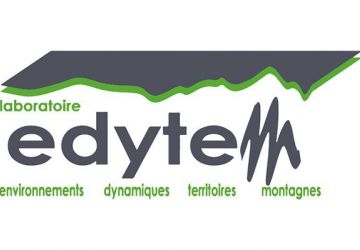Projet de recherche
BioMont : Blended perspectives – New Mountain Life Zone
Grenoble
Du 01/04/2012 au 01/07/2014

The objective of the first WP, BioMont, open to earth sciences, was to define the conceptual and methodological foundations for an analysis of the effects of global change on societies, activities and mountain territories. This work on a multidisciplinary concept went hand in hand with methodological work on interdisciplinarity, which itself led to the experimentation and definition of tools for implementing productive multi- or inter-disciplinary dialogue.
Dedicated to the interdisciplinary analysis of the effects of global change on mountain regions, BioMont was underpinned by a research engineer and a post-doctoral fellow. The interdisciplinary perspective led to the implementation of workshops of varying scope. These workshops were either internal to the workgroup, or academic and open to external researchers who are recognised specialists in the topics concerned, or in partnership with socio-professional players or intermediary players. A number of tools intended to promote interdisciplinary dialogue were developed: annotated bibliography, glossary, systemic timeline.
The construction of a common conceptual and methodological platform to deal with the concept of global change and which is meaningful to humanities and social sciences implies calling on other major disciplinary fields, earth sciences and environmental sciences, which benefit from tools for observing, qualifying and quantifying long-term changes, to build on their experiences and their thought processes, either past or present. Given the complex, multiple meanings involved, the challenge was to develop common tools in order to get to grips with the concept collectively.
Three main tools for establishing multidisciplinary dialogue were activated:
- An initial methodological task to compile and analyse literature on the concepts of global change and adaptation. This involved examining the distinctions, the appropriation by humanities and social sciences, and the correlated concepts (divergences, breaks, etc.). It revealed the types of approach taken, not only in terms of objectives and topics, but also in terms of scale. This task also served to define which contributions could be made by humanities and social sciences. A shared definition of global change emerged: "a transformation and a transition of the organisation of societies and social practices against a background of cultural, climatic, energy, economic and demographic change". This summary, entitled "Situational analysis of the concept of global change in the various disciplinary fields, and more specifically in humanities and social sciences. Bibliographical briefing note" is available via the LabEx website.
- The second tool is the glossary. It develops the identification of concepts and their meanings in the different disciplines (break, divergence, adaptation, emergence, self-organisation, inertia, forcing, transformation, balance, etc.). It engenders the co-construction of shared definitions, i.e. the foundations of dialogue. This multidisciplinary glossary comprises two types of concepts: methodological concepts (polysemous or polymorphous concepts that can be interpreted by each player concerned, depending on his or her research positioning); and theoretical concepts, taken from the theory of complex systems, on the basis of which the team sought to examine change processes in mountain territories. It forms an ongoing "work in progress".
- The third tool capitalises on these bases. With the objective of devising shared operative protocols and tools to facilitate and support research, WP1 adopted the process-based approach and tested a tool for representing changes via a timeline of complex processes, inspired by the chrono-systemic timelines used by geographers. This timeline was tried out by researchers from various disciplines on their own research subjects: agrologists, economists, land developers, anthropologists, sociologists, civilization specialists, geographers. The various analyses concerning the tool's input were confronted. In addition, based on the results, an analysis of the tool's design and of the modifications needed to improve its efficiency was carried out. Its use served to reveal the depth and breadth of epistemological positionings and conceptions of change, and to bring to the fore interdisciplinary issues based on complementary approaches. It also forced the players concerned to "innovate" within their respective disciplines, by hybridising their concepts, each in their own way, around the group's issues. By its very nature, this use also serves to consider the long term and to confront the complexity of the temporal scales involved in a change process. The contribution of this experiment for fostering dialogue across different disciplines has been formally documented in a number of publications. The chrono-systemic timeline methodology proved to be productive and will likely be developed. Consequently, the decision was made to explore the possibilities of building a generic tool intended both for researchers and for professional use, in particular by facilities involved in territorial diagnoses, planning or projects. 6 months' post-doctoral research were dedicated to a feasibility study in 2015. The chrono-systemic timeline was also an award-winning project at the "Innovatives SHS" event.
In addition to these tools, three thematic, interdisciplinary projects were conducted following an internal call for projects to partner units:
- CrHistAl (Crues historiques dans les Alpes - historic flooding in the Alps)
- JAILOO (Permanence and change in Kyrgyz grazing communities), developing a geo-anthropological approach;
- CGPM (Changement Global et Populations de Montagne - global change and mountain populations)
Considerable momentum has been generated by this WP. In fact, a particularly extensive spectrum of humanities and social sciences is involved, including anthropology, literature and geography. The steps taken prompted dialogue with specific scientific disciplines: ecology, information technology, climatology, hydrology. They brought about collective work, as well as shared theories and conceptual transfers. This collective momentum is reflected in collective publications: on the timeline itself via a collective document presented to the "Cahiers ITEM" digital collection, and an article in the EspacesTemps.net journal.

 Facebook
Facebook Forward
Forward Google+
Google+ LinkedIn
LinkedIn Twitter
Twitter






